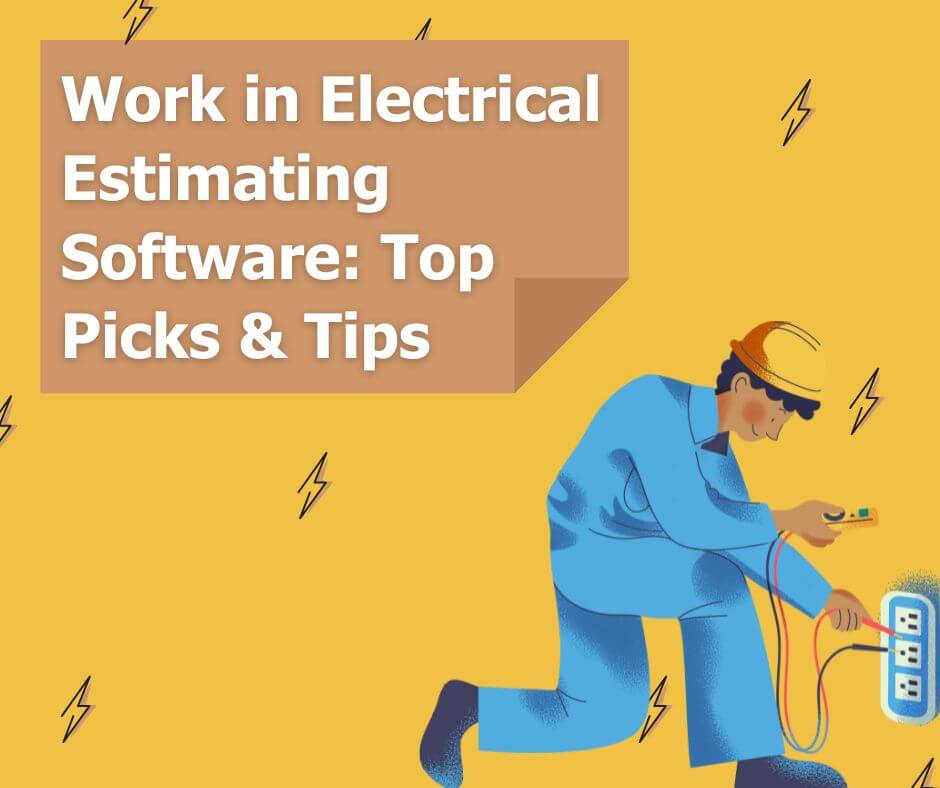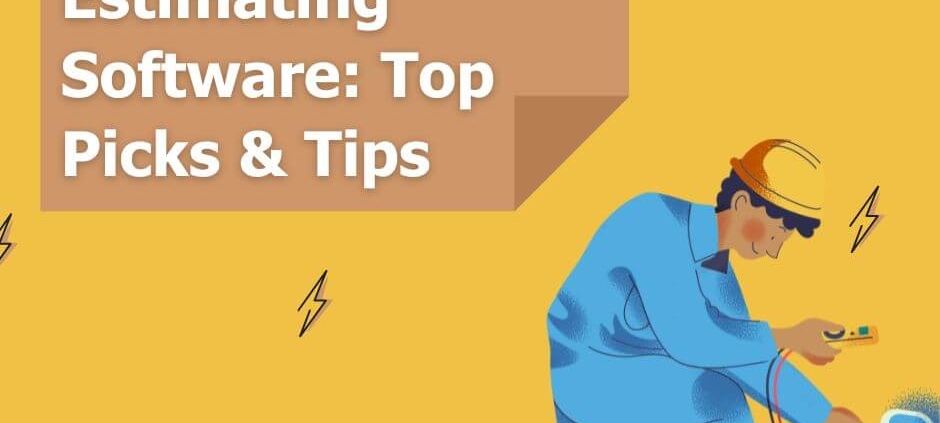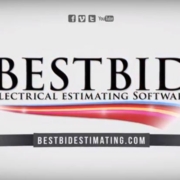
Accurate cost estimation is critical in electrical contracting. It determines project viability and profitability and ensures competitiveness in a demanding industry.
That’s why more electrical professionals are transitioning to electrical estimating software to streamline their work. But how does one work in such software, and which tools do professional electrical estimators rely on?
This comprehensive guide will walk you through the essentials, from critical tasks to recommended platforms.
 Countless options exist in the realm of electrical estimating software, making it crucial to choose one that fits your workflow. Here are some of the industry’s top picks, dominated by usability and advanced features:
1. Best Bid Next Generation
Best Bid Next Generation offers enhanced estimating accuracy and speed with its user-friendly interface and lifetime updates. Features include:
Countless options exist in the realm of electrical estimating software, making it crucial to choose one that fits your workflow. Here are some of the industry’s top picks, dominated by usability and advanced features:
1. Best Bid Next Generation
Best Bid Next Generation offers enhanced estimating accuracy and speed with its user-friendly interface and lifetime updates. Features include:
Why Electrical Estimating Doesn’t Need to Be Hard?
Gone are the days of manual estimating. Modern technology allows professionals to simplify the otherwise daunting task of creating detailed, accurate estimates. Electrical estimating software makes it easier to count parts, measure lengths, factor indirect costs, and apply overhead. It minimizes errors, saves time, and enhances efficiency so you can focus on what matters most–winning more bids. Below, we outline the steps electrical estimators use within software systems to ensure precision.Key Steps in Electrical Estimating
1. Count All Items That Can Be Counted
Accurate counting ensures you don’t leave any component unaccounted for. Here’s what needs to be on your radar:- Lighting (bulbs, fixtures, etc.)
- Lighting Controls (dimmers, timers, etc.)
- Switches
- Receptacles
- Data and Communication Ports (Ethernet, fiber optics)
- Fire Alarm Wire Access Points
2. Measure All Items That Can Be Measured
Beyond counts, accurate measurement is vital for cables and conduits. Using software, you can measure lengths directly from uploaded PDFs. Focus on:- Lighting Branches
- Power Branches
- Motor Feeders
- Panel Feeders
- Low Voltage Cabling
3. Transfer Data to an Estimate
Once you’ve counted and measured, import all data into your software’s estimating interface. This step permits you to assign prices to materials accurately.4. Allocate Man-Hours
Your estimate isn’t complete without accounting for the workforce. Assign labour hours for every task at a composite rate of pay, which covers not only wages but also benefits and taxes.5. Account for Indirect Costs
Don’t forget the hidden expenses that often cut into profitability. Indirect costs include:- Permits
- Temporary power setup
- Equipment and fuel costs
- Travel expenses
- Supervision and management
- Storage and job trailer costs
- Per diem rates for workers
6. Apply Overhead and Profit
Every estimate must reflect your business’s operating costs and desired profit margin. Software tools simplify this step by letting you globally apply percentages to material, labour, and indirect costs.7. Create a Winning Proposal
Finally, use your estimate to create a polished proposal, including:- Opening Statement: Introduce your business and emphasize professionalism.
- Scope: List all work included.
- Assumptions: Highlight prerequisites, such as timely inspections.
- Exclusions: Make clear any work not covered.
- Selling Price: Give a total price based on your estimate.
- Terms: Finalize payment expectations and conditions.
What Software Do Electrical Estimators Use?
 Countless options exist in the realm of electrical estimating software, making it crucial to choose one that fits your workflow. Here are some of the industry’s top picks, dominated by usability and advanced features:
1. Best Bid Next Generation
Best Bid Next Generation offers enhanced estimating accuracy and speed with its user-friendly interface and lifetime updates. Features include:
Countless options exist in the realm of electrical estimating software, making it crucial to choose one that fits your workflow. Here are some of the industry’s top picks, dominated by usability and advanced features:
1. Best Bid Next Generation
Best Bid Next Generation offers enhanced estimating accuracy and speed with its user-friendly interface and lifetime updates. Features include:
- Built-in Auto Count
- Real-time pricing and cost database updates
- No recurring fee–buy it once and own it
- Lifetime customer support
2. Best Bid Hybrid Pro
A popular choice for it’s on-screen takeoff capabilities, Hybrid Pro also allows users to:- Upload PDF drawings
- Count and measure directly on-screen
- Automate symbol searches and measurements
3. Accura Cadd PDF Draw
Focused on blueprint modifications, this software is fantastic for as-built drawings and detailed project edits.4. McCormick Estimating
McCormick’s scalable, cloud-enabled platform seamlessly integrates with project management tools, supporting large enterprises.5. ConEst
Preferred by contractors who want to track estimates through project completion. Features include comprehensive reporting and database customization. Each of these options caters to different business sizes, project complexities, and budgets. For smaller contractors or businesses new to digitizing their workflow, Best Bid products are highly affordable and effective choices.Why Choose Electrical Estimating Software?
Switching to electrical estimating software offers significant advantages over manual methods. With these tools, you benefit from:- Enhanced Time Management: Automate tedious processes like measurements and calculations.
- Improved Accuracy: Eliminate manual errors.
- Streamlined Collaboration: Work across teams seamlessly with shared platforms.
- Greater Profitability: Detailed estimates help avoid overbids or underbids, securing more projects.
Elevate Your Business With Best Bid Tools
Want a reliable method to elevate your business? Best Bid Estimating Software has you covered. Designed by industry experts, it’s tailored to meet the challenges faced by electrical contractors. Key benefits include:- Faster, more detailed estimates
- Unlimited use with no recurring fees
- Lifetime customer support and updates









